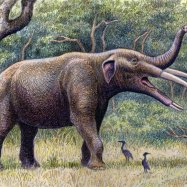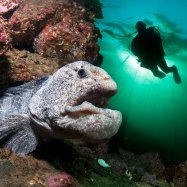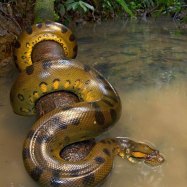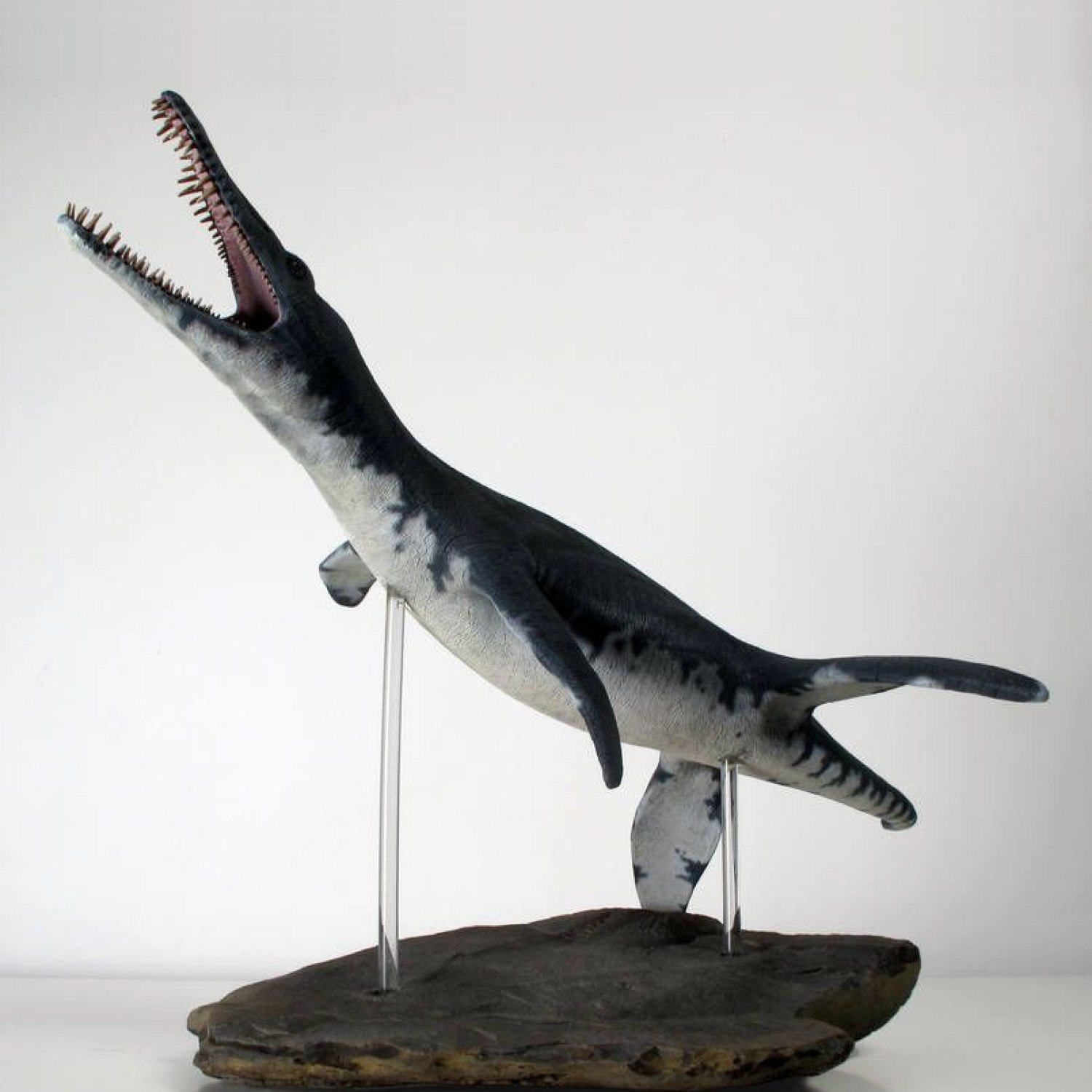
Pliosaur
Up to 15 meters
Did you know that the Pliosaur, a prehistoric marine reptile from the family Pliosauridae, could reach up to 15 meters in length? This long and streamlined creature ruled the oceans during the Jurassic period. Its powerful jaws and sharp teeth made it a fearsome predator. Fascinating, isn't it? #Pliosaur #prehistoricanimals #marinepredator
Animal Details Summary:
Common Name: Pliosaur
Kingdom: Animalia
Habitat: Marine
The Prehistoric Sea Monster: A Closer Look at the Mighty Pliosaur
Deep in the vast and mysterious oceans, one of the most fearsome and powerful creatures ever to roam the waters can be found - the Pliosaur. With a mighty body and a reputation for being a top predator, this marine beast has captivated the interest of scientists and animal enthusiasts alike. In this article, we will take a deeper look at the Pliosaur, from its scientific classification to its unique features and behaviors, and discover what makes it such an extraordinary creature.The Classification of Pliosaur
Scientifically known as Pliosaur, this marine reptile belongs to the kingdom Animalia, making it a part of the vast and diverse animal kingdom Pliosaur. It is also classified under the phylum Chordata and class Reptilia, indicating its vertebrate and reptile characteristics. For its order, it falls under the Plesiosauria, a group of marine reptiles that thrived during the Mesozoic era. The family of Pliosauridae is where it also belongs, along with other predator species such as Kronosaurus and Liopleurodon.Habitat and Distribution
As a marine animal, it is no surprise that the Pliosaur's habitat is in the vast and deep oceans. It prefers the open waters but can also be found in nearshore environments. Unlike some species that have specific geographical distributions, Pliosaurs can be found globally, from the warm tropical waters to the cold arctic seas. Its wide distribution could be attributed to the fact that they were great swimmers, able to cover vast distances in search of prey.Feeding Habits
One of the most notable features of the Pliosaur is its feeding method as a carnivore. With its strong jaws and razor-sharp teeth, it is considered one of the top predators of the ancient oceans Persian. Its diet mainly consisted of fish, squid, and other marine creatures, which it captured with its powerful bite. Some scientists even believe that it could also hunt larger marine reptiles such as Ichthyosaurs and Plesiosaurs.Physical Characteristics
The Pliosaur's body shape is one of its most unique and fascinating features. It is long and streamlined, much like a modern-day crocodile, making it a fast and efficient swimmer. It also had four powerful flippers, giving it excellent propulsion and maneuverability in the water. Its head is large and is equipped with strong jaws, lined with sharp teeth, perfect for capturing its prey.One of the most remarkable things about this prehistoric sea monster is its size, with some species reaching up to 15 meters in length. That makes it one of the largest marine predators, even surpassing the size of a Tyrannosaurus Rex! Its sheer size and formidable appearance make it a truly terrifying creature of the ancient seas.
Varied Coloration
While it is believed that the Pliosaur had scales covering its body like modern reptiles, its coloration is still a mystery. However, based on fossil evidence, it is speculated that they had various colorations, ranging from dark browns to shades of green and grey. This variation in color could have allowed them to blend in with their surroundings and ambush their prey effectively.Ancient Origins and Discoveries
The Pliosaur is a true relic of the past, with its origins dating back to the Jurassic period, over 150 million years ago. It first appeared during the Toarcian stage and quickly evolved and adapted to its marine environment. Despite their great size and ferocious nature, they eventually went extinct during the Cretaceous period, about 100 million years ago.The existence of Pliosaur was first discovered by the famous Victorian paleontologist Mary Anning in 1823. She found the first complete Pliosaur skeleton in 1821 in England and named it Plesiosaurus macromerus. Since then, many fossil remains have been found all over the world, giving scientists a better understanding of this ancient sea creature's biology and behavior.
Modern-Day Implications
With the advancements in science and technology, we can now delve even deeper into the world of the Pliosaur. Using fossil evidence and computer simulations, scientists have been able to reconstruct this creature's life and movements, giving us a glimpse of what it was like to live in the ancient oceans. Studying the Pliosaur's anatomy and adaptations has also helped us understand how modern-day marine animals have evolved and adapted over time.The Pliosaur's Legacy
The Pliosaur's reign may have ended millions of years ago, but its legacy lives on. Through fossil discoveries and scientific research, we continue to learn more about this ancient predator and the world it inhabited. Its sheer size and predatory abilities have captured the fascination of many and cemented its place in history as one of nature's most magnificent and successful creations.In Conclusion
The Pliosaur remains one of the most fascinating and elusive creatures from the past, with much yet to be discovered about its biology and behavior. Its formidable size, unique physical features, and top predator status make it a truly remarkable animal. With its legacy continuing to capture the imaginations of scientists and animal enthusiasts alike, it is safe to say that the Pliosaur will remain an enduring and legendary figure in the world of prehistoric creatures.

Pliosaur
Animal Details Pliosaur - Scientific Name: Pliosaur
- Category: Animals P
- Scientific Name: Pliosaur
- Common Name: Pliosaur
- Kingdom: Animalia
- Phylum: Chordata
- Class: Reptilia
- Order: Plesiosauria
- Family: Pliosauridae
- Habitat: Marine
- Feeding Method: Carnivore
- Geographical Distribution: Global
- Country of Origin: N/A
- Location: Oceans
- Animal Coloration: Varied
- Body Shape: Long and streamlined
- Length: Up to 15 meters
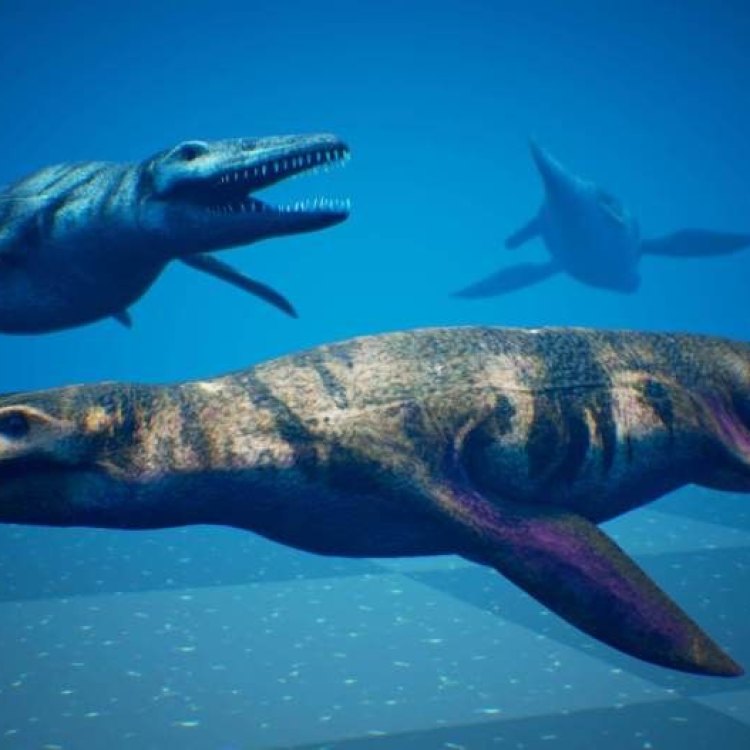
Pliosaur
- Adult Size: Large
- Average Lifespan: Unknown
- Reproduction: Sexual
- Reproductive Behavior: Unknown
- Sound or Call: Unknown
- Migration Pattern: Unknown
- Social Groups: Unknown
- Behavior: Apex predator
- Threats: Extinction
- Conservation Status: Extinct
- Impact on Ecosystem: Top predator
- Human Use: Fossils
- Distinctive Features: Large head, powerful jaws
- Interesting Facts: One of the largest marine reptiles to have ever lived
- Predator: Unknown
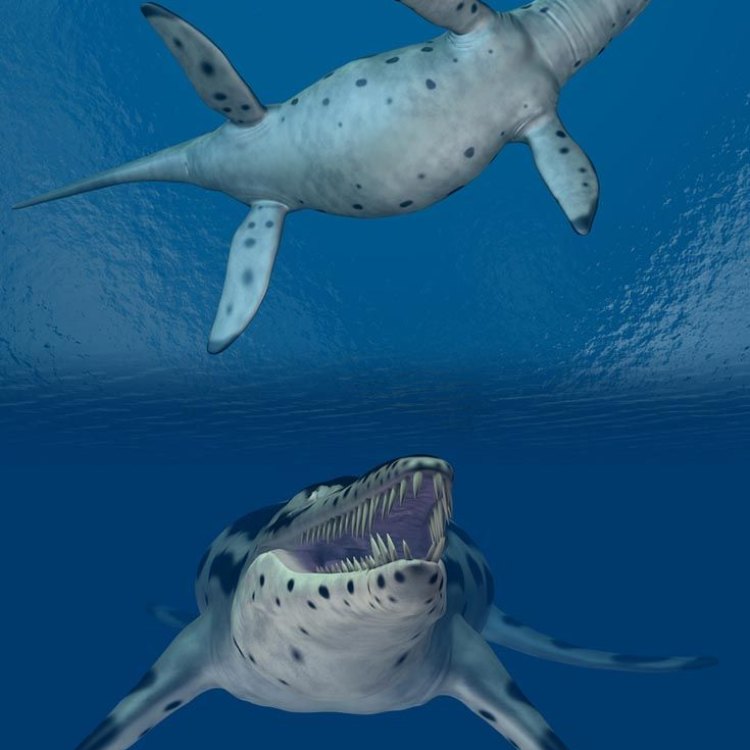
Pliosaur
The Mighty Pliosaur: A Massive Apex Predator That Once Ruled the Oceans
The ocean is a vast and mysterious place, filled with creatures that continue to intrigue and astound us. Among them, the pliosaur stands out as one of the most fascinating and awe-inspiring creatures to have ever lived. As the largest marine reptile to roam the seas, the pliosaur was a formidable apex predator that ruled the oceans for millions of years. In this article, we dive deep into the world of the pliosaur, exploring its distinctive features, behavior, and its impact on the ecosystem PeaceOfAnimals.Com.But first, let us get acquainted with this incredible creature.
The pliosaur, also known as Pliosaurus, was a prehistoric aquatic reptile that lived in the oceans during the Jurassic and Cretaceous periods, approximately 200 to 65 million years ago. It belongs to the family of plesiosaurs, a group of marine reptiles that includes the iconic long-necked plesiosaur and the elasmosaur. However, the pliosaur stands out as the largest and most fearsome predator of its time.
Adult pliosaurs were massive, with an average size ranging from 23 to 33 feet, though some species could reach up to 40 feet in length. They had a body shape similar to modern-day crocodiles, with four powerful flippers and a long, streamlined body. Yet, what truly set them apart from other marine reptiles was their massive head, powerful jaws, and sharp teeth.
The pliosaur's head was much larger than its body, with a length of up to 6 feet. It was equipped with a huge jaw that could open up to 4 feet wide, enabling it to swallow large prey whole Patterdale Terrier. Its teeth were conical and serrated, perfectly adapted for gripping and tearing through flesh. This, coupled with its powerful bite force, made them one of the most formidable predators in the dinosaur era.
Despite their impressive size and strength, much about the pliosaur remains a mystery. As an extinct species, much of their behavior and biology can only be speculated. We know that they were sexual reproducers, as evidenced by the discovery of their eggs and nests. However, their reproductive behavior and lifespan remain unknown.
Likewise, there is no evidence of the pliosaurs emitting any sounds or calls, making it challenging to determine their communication patterns. We also have little information on their migration patterns or social groups.
Despite the lack of concrete data, paleontologists believe that the pliosaur was a solitary animal that lived in the open ocean, only coming to land to lay eggs. Its massive size, immense strength, and apex predator status would have made them a formidable force in the ancient seas.
But like most other dinosaurs, the reign of the pliosaur eventually came to an end. It is believed that the pliosaur became extinct approximately 65 million years ago, along with the dinosaurs. While the exact cause of their extinction is unknown, it is speculated that the sudden global catastrophe, such as a massive asteroid impact, might have led to their demise.
Despite their extinction, the pliosaur's impact on the ecosystem cannot be overlooked. As the top predator of their time, they played a vital role in maintaining the balance of marine life. Their prey consisted of other marine reptiles, such as ichthyosaurs and mosasaurs, as well as fish and other smaller creatures. By controlling the populations of these animals, the pliosaur helped keep the marine ecosystem in check.
Moreover, their fossil records provide us with valuable insights into the prehistoric oceans and the evolution of marine life. The discovery of their fossils has allowed researchers to understand their anatomy, behavior, and their place in the ecosystem. One of the most significant findings was uncovering the existence of a second, smaller species of pliosaur, which suggests that they may have been more diverse than originally thought.
Apart from being a source of scientific discovery, the pliosaur has also captured the imagination of people for centuries. The fear and awe this majestic creature evokes can be seen even today, as they continue to be popular characters in films, books, and other forms of media.
But perhaps the most significant human use of the pliosaur has been through its fossils. Fossils of the pliosaur have been found all around the world, from Europe to North America, and have been studied and collected by scientists and enthusiasts alike. These fossils are vital to our understanding of the ancient world, and they continue to be a source of fascination and wonder for many.
In addition to their impressive size and status as apex predators, the pliosaur also has a few other interesting facts that make them stand out among their dinosaur counterparts. For one, they were known to shed their teeth regularly, with some species replacing their teeth every two weeks. This continuous renewal process ensured that they always had sharp and functional teeth for hunting and surviving in the harsh marine environment.
Furthermore, the pliosaur is also thought to have been warm-blooded, a rare trait among reptiles. This means that they were capable of regulating their body temperature, just like modern-day mammals. This would have given them an advantage in the cold depths of the ocean, allowing them to thrive where other reptiles could not.
Despite their fascinating features and significant role in prehistoric oceans, the pliosaur ultimately met the same fate as the dinosaurs. However, their legacy lives on, leaving a powerful impression of their dominance and influence on the ancient world.
In conclusion, the pliosaur was a magnificent and fearsome creature that once ruled the oceans. With its massive size, powerful jaws, and apex predator status, it was an integral part of the prehistoric ecosystem. While much remains to be discovered about this incredible creature, its remains continue to captivate and educate us, providing us with a glimpse into the mysteries of our planet's past. And perhaps, the pliosaur will continue to inspire and fascinate us for generations to come.
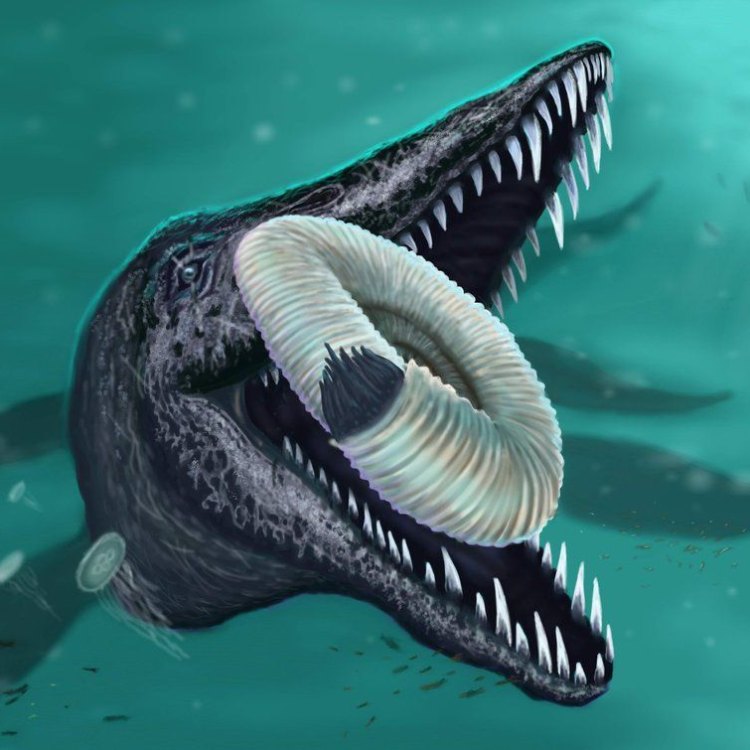
The Prehistoric Sea Monster: A Closer Look at the Mighty Pliosaur
Disclaimer: The content provided is for informational purposes only. We cannot guarantee the accuracy of the information on this page 100%. All information provided here may change without prior notice.


